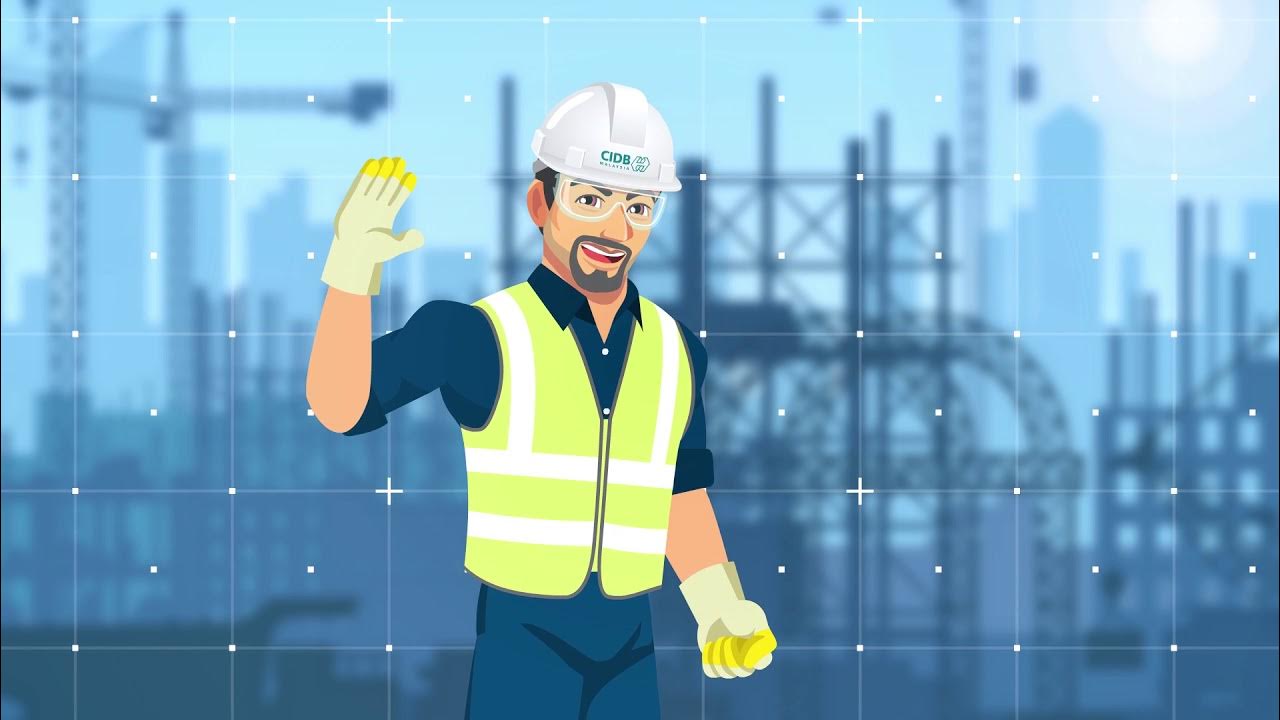MÓDULO 2 | Segurança na Construção Civil
Summary
TLDRThis video highlights the importance of occupational safety in civil construction, an industry with high risks. It covers various hazards like electrical contact, falls, and mechanical impacts, emphasizing the need for proper personal protective equipment (PPE), training, and awareness. The script stresses the significance of regulatory standards, such as NR18, and discusses strategies like well-prepared emergency plans, safety procedures, and the role of awareness in preventing accidents. The overall message is that while civil construction is essential to the economy, worker safety must be a priority to minimize risks and ensure better productivity.
Takeaways
- 😀 Safety in civil construction is crucial due to the high risks involved, including accidents and incidents within the work environment.
- 😀 Civil construction encompasses more than just building houses; it includes roads, bridges, tunnels, and other large-scale projects, all of which carry significant risks.
- 😀 Common risks in civil construction include accidental electrical contact, falls, and mechanical shocks, all of which can lead to severe accidents and injuries.
- 😀 Regulatory Standard 18 (NR18) is a key guideline for safety in the construction industry, providing rules to minimize risks, prevent accidents, and protect workers' health.
- 😀 Personal Protective Equipment (PPE) is essential in civil construction, including helmets, gloves, boots, and specific clothing tailored for various roles such as electricians or mechanics.
- 😀 Safety measures must be supported by well-prepared emergency plans, proper training, and regular inspections to ensure that all equipment and procedures are in place.
- 😀 Fall protection is a primary concern, with guidelines like NR35 focusing on safety measures to prevent fatal accidents when working at heights.
- 😀 Burials and excavations present a significant risk in civil construction. Proper supervision, training, and safety procedures are essential to prevent fatal accidents from collapses.
- 😀 Electric shock risks are high in civil construction due to electrical work. PPE, specific training, and adherence to safety standards like NR10 help mitigate these hazards.
- 😀 Raising awareness among workers, creating safety committees, and adhering to Brazilian labor legislation improve overall safety, productivity, and reduce accidents and absenteeism in construction sites.
Q & A
Why is safety important in civil construction?
-Safety is crucial in civil construction because it is one of the most hazardous economic activities, with high risks for workers. The risks include accidents, injuries, and even fatalities, making safety measures essential to protect workers' health and ensure productivity.
What are some of the primary risks associated with civil construction?
-Primary risks in civil construction include accidental contact with electrical grids, falls from heights, and mechanical impacts, such as workers colliding with objects or machinery. Other risks include electric shocks and accidents involving heavy machinery and excavation.
What are PPEs and how do they contribute to worker safety?
-Personal Protective Equipment (PPE) includes items like helmets, glasses, gloves, boots, and ear protection, designed to protect workers from specific hazards they may encounter on a construction site. PPEs reduce the likelihood of injuries such as head trauma, electrical burns, and falls.
What is Regulatory Standard 18 and how does it relate to civil construction?
-Regulatory Standard 18 (NR18) is a Brazilian regulation that addresses occupational safety within the civil construction industry. It outlines safety procedures, required equipment, and training for workers to minimize accidents and occupational diseases.
What is the role of training in preventing accidents on construction sites?
-Training is essential to ensure workers understand the risks they face and how to mitigate them. It includes educating workers about proper PPE usage, correct work procedures, awareness of hazards, and emergency responses to prevent accidents like falls or electric shocks.
How can accidents at height be prevented in civil construction?
-Accidents at height can be minimized by using appropriate fall protection systems, such as lifelines, harnesses, and safety nets. Workers should also be well-trained in working at heights, ensuring they follow proper safety protocols and use the correct equipment.
What safety measures are recommended for preventing electric shocks in civil construction?
-To prevent electric shocks, workers should receive specialized training, use electrical PPE like insulated gloves and boots, and ensure electrical equipment is properly maintained. Additionally, workers should follow specific safety procedures outlined in Regulatory Standard 10 (NR10).
What is the risk of burial incidents, and how can they be avoided?
-Burial incidents occur when workers are trapped in excavations, typically during tunnel or foundation work. These can be prevented by following strict training, supervising excavation work, using proper equipment like shoring and safety barriers, and conducting thorough soil assessments before digging.
Why is the correct use of helmets and other protective gear important?
-Using the correct PPE, such as helmets, prevents injuries from mechanical impacts or falling objects. For example, helmets are crucial to protecting workers from head injuries caused by sudden impacts, such as hitting their head on overhead objects like beams or iron bars.
What are the benefits of adhering to workplace safety regulations in civil construction?
-Adhering to safety regulations helps companies reduce accidents, improve productivity, and minimize downtime caused by worker injuries or illnesses. By following safety standards, companies ensure a healthier workforce, better quality of work, and higher overall efficiency.
Outlines

This section is available to paid users only. Please upgrade to access this part.
Upgrade NowMindmap

This section is available to paid users only. Please upgrade to access this part.
Upgrade NowKeywords

This section is available to paid users only. Please upgrade to access this part.
Upgrade NowHighlights

This section is available to paid users only. Please upgrade to access this part.
Upgrade NowTranscripts

This section is available to paid users only. Please upgrade to access this part.
Upgrade Now5.0 / 5 (0 votes)





